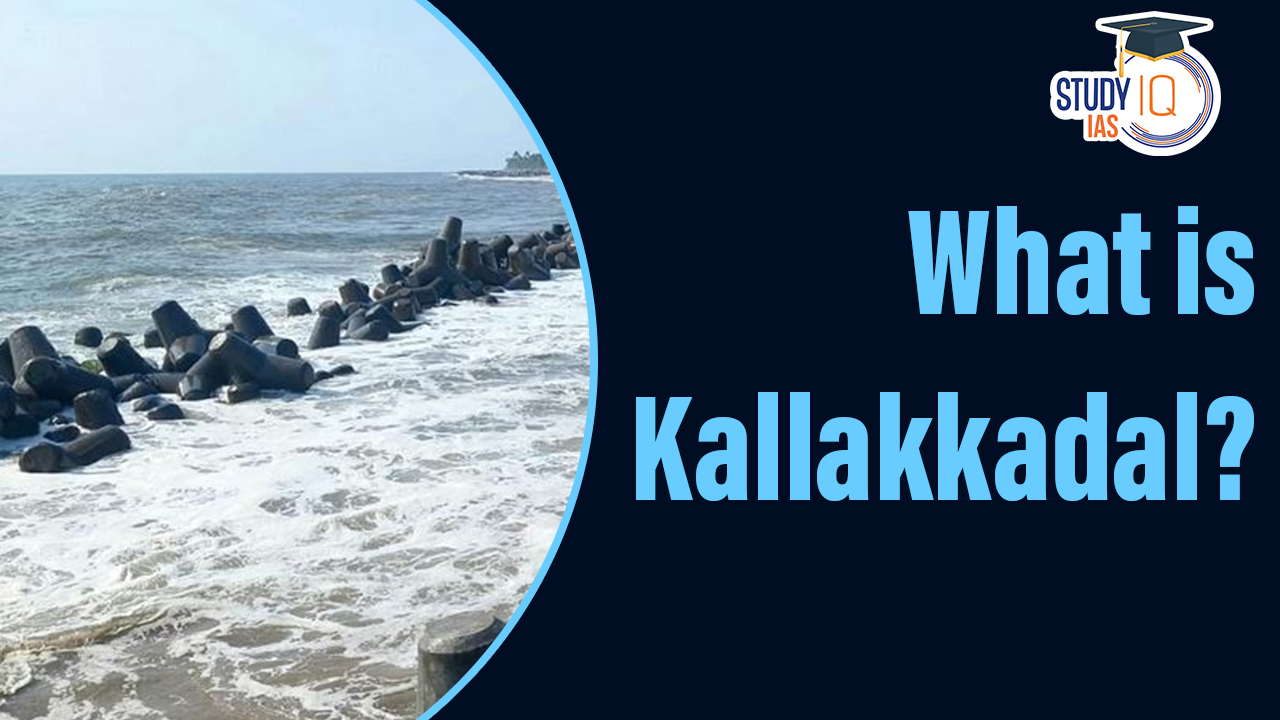Table of Contents
Context
- Recently, Kerala, India, experienced coastal flooding known as Kallakkadal, induced by remote oceanic storms.
- This instance, set off by a South Atlantic Ocean low-pressure area, led to the inundation of numerous homes across the districts of Alappuzha, Kollam, and Thiruvananthapuram.
What is Kallakkadal?
- Kallakkadal is a type of coastal flooding unique to the pre-monsoon period (April-May) on India’s southwest coast, characterised by swell waves.
- The term, approved by UNESCO in 2012, combines the Malayalam words for ‘thief’ (Kallan) and ‘sea’ (Kadal), symbolising the sea’s sudden and unexpected encroachment.
Cause and Mechanism of Kallakkadal
- Triggered by distant ocean storms, Kallakkadal results from swell waves generated by strong winds or storms in the ocean, far from the local area.
- Specifically, the phenomenon is often due to strong winds in the southern Indian Ocean, with the latest event prompted by a low-pressure system from the South Atlantic Ocean, creating swell waves up to 11 metres high.
Recent Events
- Recent flooding affected hundreds of houses in Kerala’s Alappuzha, Kollam, and Thiruvananthapuram districts, following a low atmospheric pressure system around March 25, originating 10,000 kilometres away.
- Waves began impacting Kerala and Lakshadweep, with the swell surge forecasted to continue affecting the western coast for two more days before diminishing.
Warning Systems and Measures
- The Swell Surge Forecast System, introduced by the Indian National Centre for Ocean Information Services (INCOIS) in 2020, enables seven-day advance warnings, aiding in the preparation and mitigation against Kallakkadal.
- However, predicting Kallakkadal poses difficulties due to its sudden onset without prior signs or local wind movements.
- In these cases, the indigenous knowledge of fishermen and coastal dwellers becomes invaluable for recognizing and reacting to such phenomena.
Distinction Between Tsunami and Kallakkadal
| Characteristic | Tsunami | Kallakkadal |
| Definition | Tsunamis are large waves triggered by underwater disturbances such as earthquakes. | Kallakkadal refers to coastal flooding in the pre-monsoon season due to swell waves on India’s southwest coast. |
| Wave Height | Heights can exceed 30 metres. | Waves usually range between 2 and 6 metres in height. |
| Wave Speed | Speeds can reach up to 800 km/h. | Waves move at speeds up to 50 km/h. |
| Cause | Caused by the sudden movement of water due to seismic events or landslides. | Generated by distant oceanic storms transferring energy to the sea surface. |
| Terminology | “Tsunami” comes from Japanese, meaning “harbour wave.” | “Kallakkadal” merges the Malayalam words for “thief” (Kallan) and “sea” (Kadal), recognized officially by UNESCO in 2012. |
Forecast and Precautions of Kallakkadal
- The swell surge is expected to move towards the Tamil Nadu coast, with high waves anticipated on Tuesday night.
- INCOIS has issued warnings for coastal areas prone to sea erosion, advising precautionary measures and the safeguarding of fishing vessels.


 Rare Earth Elements, Metals, Magnets, Ap...
Rare Earth Elements, Metals, Magnets, Ap...
 Places in News for UPSC 2025 for Prelims...
Places in News for UPSC 2025 for Prelims...
 Indian Continental Plate is Splitting Ap...
Indian Continental Plate is Splitting Ap...





















